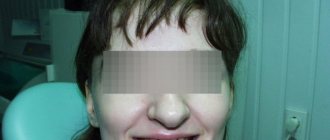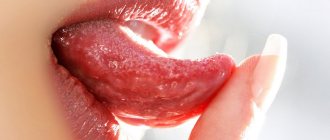How do you know if you are allergic to anesthesia?
The reaction is caused by the interaction of the drug with immune antibodies of the IgE class. Their detection is the basis of most diagnostic tests, but the first step is to take a history. This is a survey of the patient to assess the nature of symptoms and the likelihood of their connection with allergic intolerance.
Laboratory methods
Their use is widely practiced by dentists around the world to predict the response to anesthetics, filling materials and other components used in the treatment process. However, a positive test result is not yet a diagnosis; the judgment about the presence of an allergy must be supported by other information (for example, anamnesis - objective manifestations observed after injection of the drug in the past).
The most commonly used:
- complete blood count (increased number of eosinophil cells);
- immunoenzyme, chemiluminescent method for detecting specific antibodies;
- determination of tryptase and histamine levels;
- basophil activation test.
All methods have different levels and time periods of sensitivity. Thus, determination of the level of tryptase can be carried out on the eve of dental surgery (in order to assess the probable risk) or within 24 hours from the moment of symptoms manifestation (the maximum values for anaphylaxis are observed after 3 hours, and the increase begins after 15 minutes). The search for antibodies is most often recommended to be performed within 6 months after the allergic reaction occurs.
Prick test
Recognized as the safest skin test for determining the likelihood of sensitivity to local anesthetics in dentistry. Carried out using:
- Compact lancets.
- Allergenic substances.
- Diluting liquid.
- Control drugs (negative, positive).
A solution of the test substance is applied to the skin (usually the forearm). Next to it are control suspensions. Notes are made everywhere. The selected area is then pierced with a lancet, which, when used correctly, does not affect the blood vessels, but ensures rapid absorption of the drugs (and a high level of safety for the patient). The reaction is monitored for a given time - redness, swelling, or a blister indicate a positive result (sensitivity).
Allergy symptoms in dentistry
In the dosage form, the reaction may manifest itself in the form of skin lesions and urticaria.
The contact form involves swelling of the mucous membrane, itching, burning, and the occurrence of allergic stomatitis.
One of the most severe manifestations of allergies in dentistry is anaphylactic shock . The first signs of an incipient reaction are tingling of the skin of the face, then weakness throughout the body, pain in the chest. If nothing is done at this moment, swelling of the airways, heart failure, and convulsions may begin. The outcome of such inaction can be fatal.
Symptoms
Reactions to anesthetics in dental practice can be:
- immediate (reagin type);
- deferred.
According to statistical studies, most episodes of sensitivity are recorded, on average, an hour or two after medical intervention. This allows you to quickly identify and prevent unwanted reactions in the future, as well as carry out differential diagnosis with similar conditions. However, at the same time, delayed forms are not uncommon, manifesting 12 hours or more after the injection of the anesthetic.
Local (local) signs
This is a group of symptoms, the area of manifestations during the development of which is limited to the contact zone - that is, the site of drug administration. An allergy to anesthesia is characterized by:
- Edema.
- Redness (hyperemia).
- Feeling of fullness, pressure.
- Soreness of the gums and teeth - when biting.
The described signs are not dangerous in themselves, but they can develop together with other pathological reactions - urticaria, Quincke's edema. If the clinical picture includes only local symptoms, their relief (cessation) occurs even without treatment after a few days - of course, provided that the anesthetic that caused the development of the disorders is not reintroduced.
- Dry skin on elbows: causes and proper treatment
Dermatological manifestations
This group includes all types of skin lesions associated with allergic intolerance to local anesthetics in dentistry. They develop in both immediate and delayed modes and are not life-threatening or pose a very significant threat.
Hives
Characterized by the following complex of manifestations:
- skin redness;
- swelling, severe itching;
- the appearance of a rash in the form of blisters;
- general weakness;
- headache;
- increase in body temperature.
Sometimes there is also a decrease in blood pressure (hypotension). The blisters are small or large (up to 10–15 cm in diameter), pink, merging with each other. The fever is called “nettle fever”; thermometry values range from 37.1 to 39 °C. The rash disappears on its own and can persist for up to 24 hours; recurrence after initial relief of symptoms cannot be ruled out.
Quincke's edema
This is an allergic reaction that is often observed in combination with urticaria; During the development process, different areas of the skin and loose fiber are affected. Localized mainly in the area:
- Eyes, nose, lips, cheeks.
- Oral cavity.
- Larynx, bronchi.
The swelling forms quite quickly, grows over several hours, has an elastic consistency, and rises above the skin level. The most dangerous location is in the respiratory tract (in particular, in the larynx) - this threatens suffocation and, if timely assistance is not provided, death. The clinic includes symptoms such as:
- significant swelling of the lips;
- pale skin;
- difficulty breathing, which gradually increases;
- "barking" cough;
- dyspnea.
If the gastrointestinal tract is affected, the following appears:
- nausea;
- vomit;
- abdominal pain;
- diarrhea.
If the localization of edema is not life-threatening, it can resolve on its own after 10–12 hours. Otherwise, the patient requires emergency medical care to restore airway patency.
Anaphylactic shock
This is the most severe consequence of a reaction to a dental anesthetic and has the following symptoms:
- Weakness.
- Dizziness.
- Tingling and itching of the skin.
- Urticaria, Quincke's edema.
- Nausea, vomiting.
- Difficulty breathing.
- Sharp pain in the abdomen.
- Cramps.
The development of anaphylactic shock is not determined by the dosage of the drug - even a minimal amount can provoke symptoms.
There are several forms of pathology, all of them are characterized by a sharp drop in blood pressure and hypoxia (oxygen starvation) of the body due to poor circulation. They occur at different times: from a few seconds to 2–4 hours from the moment of drug administration.
- Peeling skin on the elbows: the reason for how to quickly get rid of it at home
An allergy to pain relief can also cause symptoms of rhinitis (runny nose), conjunctivitis (tearing, redness and swelling of the eyelids), isolated itching of the skin not accompanied by rashes. Without treatment, pathological signs persist for several days and gradually weaken.
Symptoms
Signs of allergies are presented in the following list:
- Changes in taste sensations - when eating food, a bitter, sour or metallic taste appears, which is not characteristic of cooked dishes;
- Burning sensation in the mouth or tongue;
- Excessive salivation or, conversely, complete dry mouth;
- Inflammation of the mucous membrane, tongue and gums: swelling, redness, the appearance of small ulcers and bleeding;
- Electrical discharges in the oral cavity, due to the presence of two or more metal alloys in the filling unit;
- Redness and swelling of the eyelids, nose, lips, cheeks, accompanied by a sore throat.
These are the most common reactions of the body to low-quality filling and orthodontic preparations.
Treatment
It is carried out as an emergency (in the dentist’s office, on the street or at home after the development of symptoms) or planned (prescribed by a doctor to eliminate manifestations that are not life-threatening, but cause discomfort).
Limiting the use of allergen medications
This method is also called elimination. The patient must refuse the anesthetic that caused the deterioration of the condition and, if necessary, undergo diagnostics to determine the immunological nature of the reaction. If it is confirmed, the use of a provoking drug in any form should be excluded - it is important to pay attention not to the trade name of the drug, but to the main active ingredient and additional components (if they were the “culprits” of the violations).
It is important to understand that it is not only dental procedures that pose danger. The dentist should be aware of the presence of intolerance, but caution is also required in other situations - for example, when using throat sprays and lozenges containing local anesthetics, as well as when preparing for gastroscopy and other procedures that involve the need for local anesthesia.
Drug therapy
To relieve symptoms of allergic reactions, the following are prescribed:
- antihistamines (Cetrin, Zyrtec);
- topical glucocorticosteroids (Elocom);
- sorbents (Smecta, Enterosgel).
In most cases, the drugs are taken orally in tablet form. The use of skin products - ointments, lotions - is required for dermatological lesions accompanied by rash and itching. Sorbents play a supporting role, accelerating the removal of allergens from the body; they are not prescribed to all patients.
For emergency treatment of anaphylactic shock, Adrenaline is required first of all (it is also produced as part of an Epipen syringe pen for self-use). Systemic glucocorticosteroids (Dexamethasone, Prednisolone), antihistamines (Suprastin) and other drugs (Mezaton, Ascorbic acid, solutions for intravenous infusion) are indicated. These drugs are also administered for urticaria and Quincke's edema.
Benefits of skin testing
It is important to understand that in 95% of cases local anesthetics cause pseudoallergic reactions and only in 5% of cases - allergic reactions, although they look the same and can be severe. Testing for specific IgE to local anesthetics (in other words, a blood test from a vein) reveals only immune, allergic reactions. However, it does not address the effects of drugs that may cause pseudo-allergies. And as a result, the patient does not know whether he can use this or that medicine or not. A more reliable method of examination is to conduct skin provocative tests - this is the only diagnostic test that detects both allergies and pseudo-allergies to different types of drugs.










